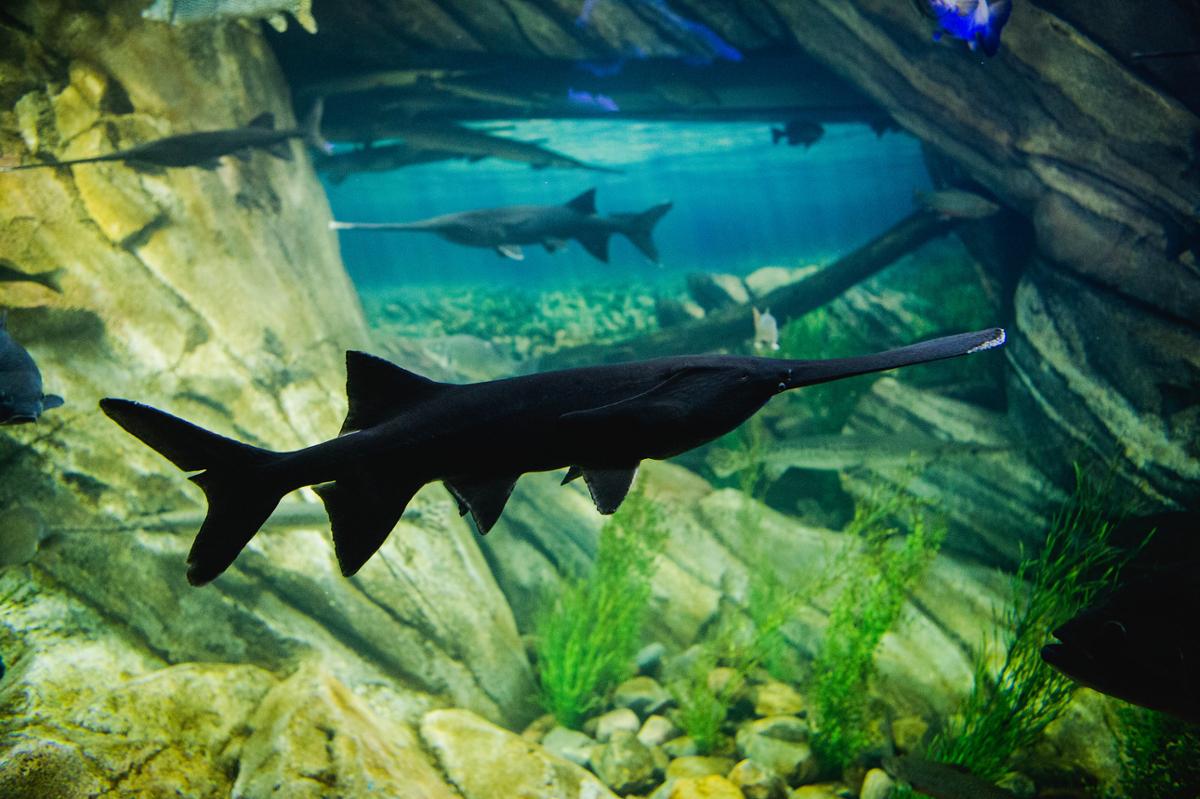The American paddlefish has swum through the Mississippi Valley and its drainage basin for sixty-five million years. Given its wide range, the paddlefish has come to be known by many names, including the Mississippi paddlefish, spoonbill, and spoonbill cat. These monikers refer to the paddle-shaped nose, called a rostrum, that extends a third of the fish’s body length and distinguishes it from all other American freshwater fish.
Until the early 1900s American paddlefish swam throughout all of the River Basin, but with the construction of modern dams and overfishing, its habitats and populations have declined. American paddlefish are at high risk of poaching—but not for their flesh; it’s their eggs, called roe, that anglers want. After overfishing caused the sharp decline in beluga caviar in the 1980s, the U.S. placed an embargo on that imported delicacy. Consequently, paddlefish roe became a hot commodity in American and international fish markets.
The danger of collecting fish for roe is that they must be taken at the time when their eggs are nearly ripe. This only occurs in a portion of female paddlefish every spawning season, and most females only lay eggs once every several years. Without protections, the destruction of paddlefish would be enormous.
Workers in fisheries have long fought to protect the paddlefish. Back in 1914, Louisiana was the first state to protect it amidst the so-called Cajun caviar craze. The commercial sale of roe remains illegal in Louisiana, and the paddlefish populations that inhabit the River Delta and its oxbow lakes and bayous have gradually stabilized over the past 30 years.









